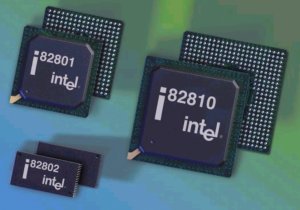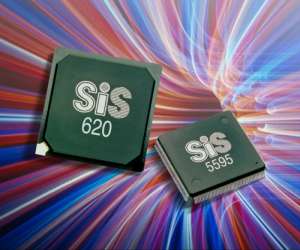Whitney, Intel 810 Chipset - Part II
Introduction
Since we have already provided all the technical details behind the new i810 chipset architecture , let's look at the performance results this new i810 chipset has to offer. Because this new chipset includes it's own unique integrated video solution, providing some comparative results was quite interesting. I decided to use several platforms & video solutions to help map out where the performance of this new i810 product stands.
SiS 620 Overview
Because the SiS620 and the i810 are targeted towards the same low-end market, it only makes sense to compare the features and performance each has to offer. We mentioned the SiS620 chipset in our i810 Overview - Part I. The SiS620 chipset was the first available integrated chipset for Pentium II CPU's (e.g. Pentium II/III, Celeron). SiS released the 620 integrated solution last year in August of 1998. SiS basically integrated their SiS6326AGP chip into the SiS620 chipset. The companion chip to the SiS620 is the SiS5595 PCI system controller. The SiS5595 incorporates the PCI to ISA bridge, DDMA support, SIRQ, ACPI/Legacy PMU, environmental controller, and USB. Some of the noteworthy features the SiS620 chipset includes are:
- Supports 66/75/83/100 MHz (synchronous/asynchronous) host/SDRAM bus frequencies
- MS PC'99 and PCI 2.2 compliant.
- PC 100 DRAM controller, supports 3 DIMMs and up to 1.5 GB main memory.
- Ultra DMA-66 IDE controller with dual independent channels
- Supports non-UMA and UMA modes for frame buffer
All of these features are also supported by the Intel 810 chipset excluding the non-UMA support. The SiS620 allows the flexibility to support external frame buffer memory up to 8 MB (SDRAM or SGRAM). By adding the external frame buffer memory the video performance would go up, along with the overall motherboard price, due to the additional cost of the video memory. Looking at the SiS620's feature list you can see that it doesn't support the infamous AC'97 nor the wonderful, currently not supported by any available software, RNG (Random Number Generator).
In order to paint a good picture of where the performance of the i810 sits we decided to use several configurations. Besides just beating up on the video portions of both the i810 and SiS620 chipsets we decided to also configure each of these platforms with a TNT based PCI video board. This allows us to do an apples-to-apples comparison, between the i810, SiS620 and i440ZX chipsets, keeping the performance of the integrated video out of the picture. And to be fair to TNT we also configured the i440ZX based board with an AGP based TNT to see how the i810 and SiS620 integrated video fairs against a good performing AGP video adapter. Although you will not find any 440BX results in any of the graphs I actually did include Intel's 44BX in my testing. The 440BX based platform scored identically to the 440ZX based platform.
Test Systems
I810 Chipset
- Motherboard = DFI PW65-81 Rev.2
- BIOS revision = 4/23/99-i810-AD-6A69MD4AC-00
- Onboard Video driver date = 3-19-1999
SiS629 Chipset
- Motherboard = ASUS MES-VM
- BIOS revision = 3-03-1999-SiS620-MES-VM
- Onboard Video driver date = 2-26-1999
I440FX Chipset
- Motherboard = SOYO SY-6IZA
- BIOS revision = 01/12/1999-i440ZX-W977-2A69K52KC-00
Common Hardware
- Celeron 400 MHz
- 128 MB PC100 SDRAM
- Hard drive = Western Digital AC418000 (7,200 RPM) ATA-66
Add-in Video Boards
- Diamond Multimedia Viper V550 AGP
BIOS revision = 1.93E
Driver = Detenator- Diamond Multimedia Viper V550 PCI
BIOS revision = 1.93E
Driver = Detenator
Benchmark Applications
- Winstone 99 (Business) v1.0 ran with a resolution of 1024x768x16bpp
all benchmarks were run with 85Hz refresh
all benchmark results are averaged across 3 runs- Quake II v3.20
- Shogo v22.14
Operating System
- all benchmarks were run under Windows 98
- DirectX v6.1
Get Tom's Hardware's best news and in-depth reviews, straight to your inbox.

